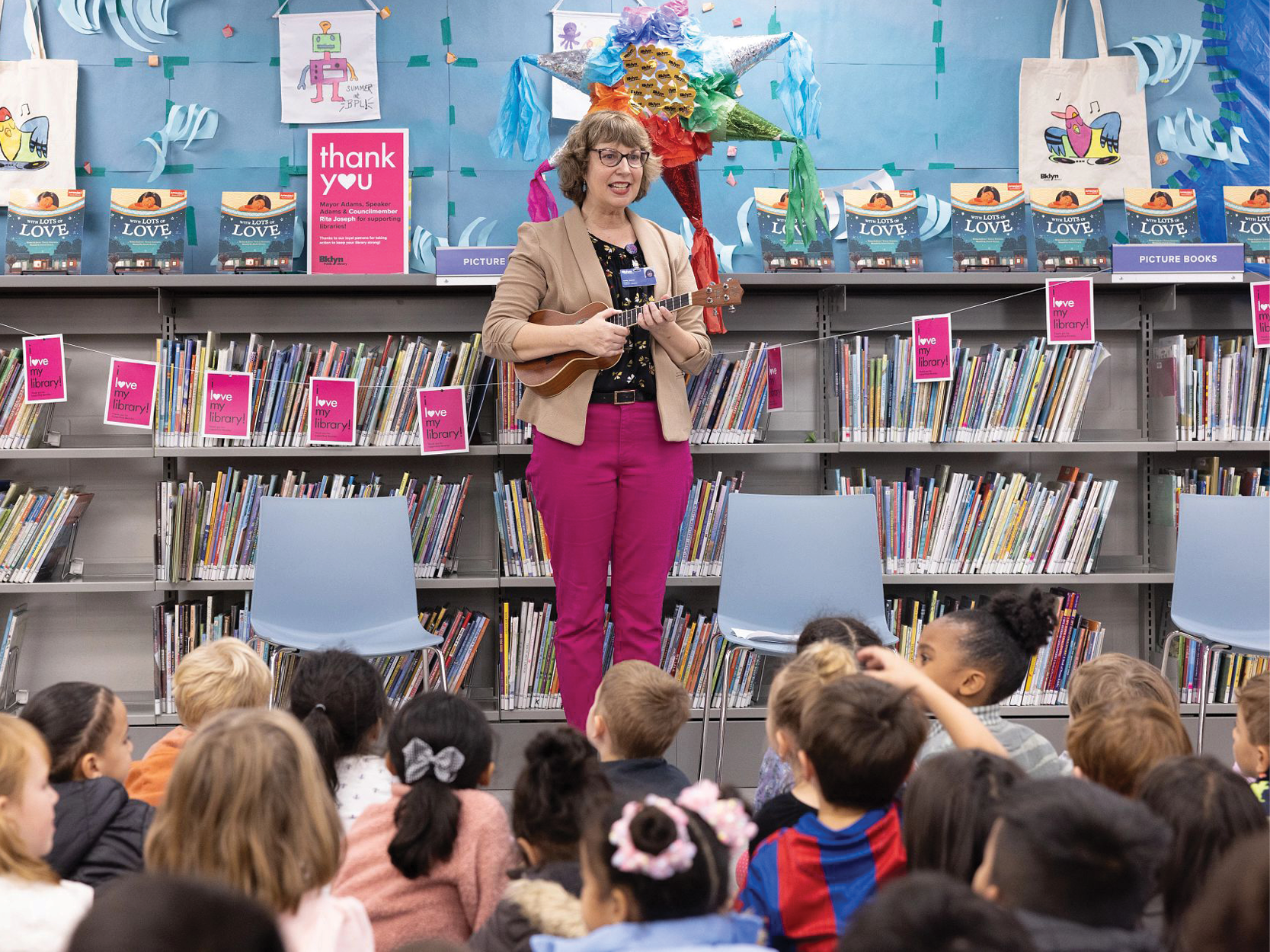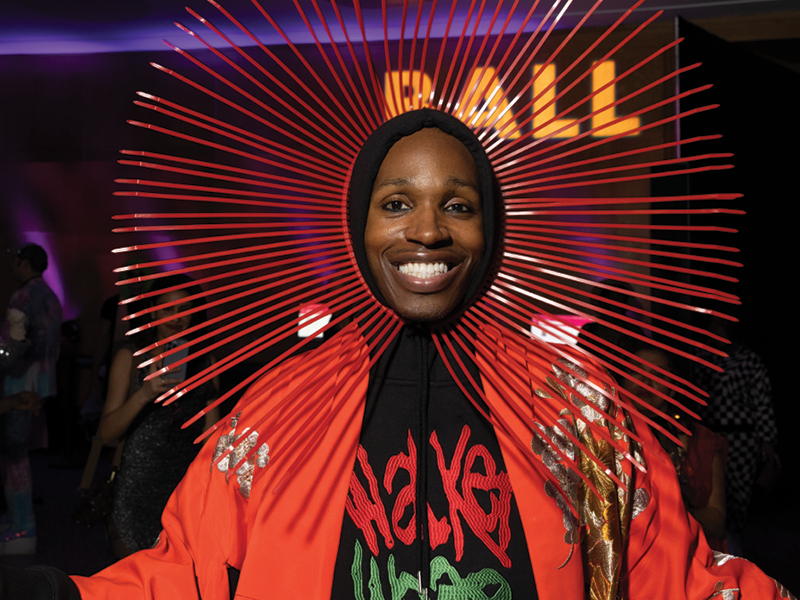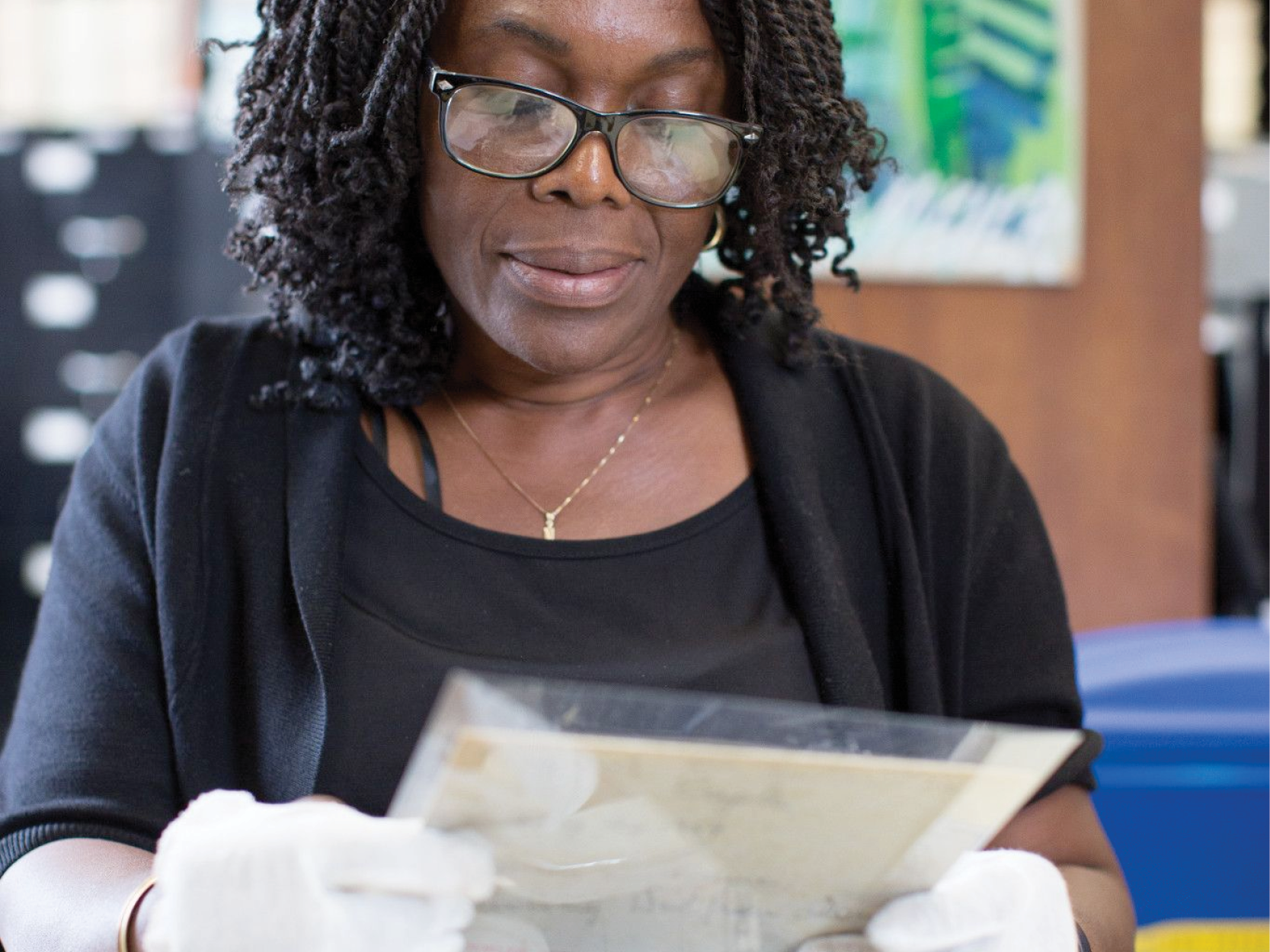The following is the transcript for Black Canarsie: A History, a library exhibit that was on display at Jamaica Bay Library from February 1st through February 29th, 2016. It has been uploaded here for educational purposes.
Introduction to the Exhibit
The Brooklyn community of Canarsie became a black majority neighborhood only as recently as the late 1990s. Despite this fact, one ought not to overlook the deep-seated history and vital role of African Americans in shaping this region of Brooklyn for over three centuries. In our age of rapid demographic and infrastructural transition, the early history of African American struggle and community in pre-urban Canarsie is at risk of being expelled from living memory, and condemned to the obscure knowledge of a few, seldom-accessed reference books.
With a focus on the history of African American life in these parts before the contentious late twentieth century, Black Canarsie: A History aims to bring to light the richness of black history in the Canarsie region from the early seventeenth through the middle twentieth century. Using research and the reproduction of archival materials, this exhibit conveys the lives and experiences of black Canarsiens against the backdrop of American history, including slavery and emancipation, the Civil War, and urbanization.
Ultimately, this exhibit aspires to show the rootedness of African Americans to Canarsie, honor their vital contributions to the neighborhood’s history, and celebrate the memory of those early generations of black men and women who called this seaside corner of Brooklyn home.
Peter Nicholas Otis, Librarian - Brooklyn Public Library, February 1st 2016
Canarsie’s First African Americans: From Slavery to Abolition (c.1636-1827)
The first African peoples to set foot on the grassy marshlands of Canarsie arrived in the bondages of slavery.
In 1636, the Dutch colonists of New Netherlands began to lay claim to Western Long Island. Negotiating with the indigenous Lenape People whom they knew as the “Canarsee Indians,” the Dutch (who had bought Manhattan Island from the Lenape ten years earlier) purchased acreage from the Island’s natives, solidifying colonial ownership of the land through deeds issued by the Governor of New Amsterdam.
Among the six founding communities settled in the region was the village of Neue Arnesfort, later called ‘Flatlands’ after the English conquest. Settlement of this land extended the Dutch frontier southeast across the region to where the Canarsie salt meadows met the waters of Jamaica Bay. Gradually, Dutch families came to own all of what today comprises the County of Kings.
Throughout colonial Kings County, African slave labor was instrumental to the transformation of the Dutch frontier into an agricultural economy--and Flatlands was no exception. During this early period, a village father of Flatlands typically held forty-five acres “of land and valley” and owned no more than two or three slaves, whom he relied on to till the earth.1 A farmer’s goal during this early period was not to generate great commercial wealth, but to practice small farming--growing and reaping enough to feed one’s family and perhaps produce a small surplus to be sold off at market.2 The households of Roelif M. Schenk, G. Wyckoff, A. Simson, Jacob T. Lane, F. Van Sigler, Jan Wyckoff, Pieter Wyckoff, and Martin Shenk all owned African slaves in Canarsie.3 By 1698, 256 people lived in Flatlands, 40 of whom were slaves of African heritage, or 15%. This roughly matches the whole population distribution of Kings County, where 293 people out of a total population of 2,013 (about 15%) were African slaves.4
Despite contractual terms included in their sale of land that were meant to guarantee their protection, many Canarsee Indians were forced into Dutch servitude alongside the African slaves. Bound to a common fate, many Africans and Canarsee Indians intermarried, their progeny becoming the property of whomever owned the African parent.5
In the eighteenth century, as Kings agriculture flourished, the farmers of Flatlands became increasingly dependent on slave labor. The Dutch now relied on their slaves as agents of profitable agricultural production.
According to the first national census of the United States conducted in 1790, 61% of all white households in Kings owned slaves, demonstrating “the highest proportion of slaveholders and slaves in the north.” 6 In the space of a century, the number of enslaved persons in Kings had more than doubled to over 30% of the general population. The same is true of Flatlands, where 137 people out of a total 423 were slaves.7 In contrast with most other states and territories in the northern United States—where the emancipation of African slaves had been achieved—slavery remained deeply entrenched within the socio-economic fabric of Kings County.
Gradual Abolition
In 1799, the Legislature of the State of New York passed an Act for the Gradual Abolition of Slavery. This act decreed that any individual born of an enslaved person after July 4th, 1799 would be considered “born free,” but would remain
…the servant of the legal proprietor of his or her mother until such servant, if male, shall arrive at the age of twenty-eight years, and if a female, at the age of twenty-five years.8
These limited terms of freedom were, by and large, concessions made to the influential slave-owning families of Kings County. Although the act was amended through the addition of an 1817 statute that would free all slaves throughout New York on July 4th, 1827, the rural economy of Flatlands continued to heavily rely on slave labor well into the early nineteenth century.9
Colored Colony: A Free Black Community Grows in Canarsie (c.1863-1961)
After slavery was abolished in the State of New York, many free blacks living in Flatlands continued to work as farmhands or servants for the old Dutch families who had previously owned them.10 Yet as the eighteenth century progressed, a new generation of African Americans would come to settle the meadows of Canarsie and establish a free black community known as "Colored Colony.”
In Brooklyn’s Last Village: Canarsie on Jamaica Bay, Merlis and Rosenzwieg describe African American life the Canarsie neighborhood that was home to between thirty and fifty black families from the middle nineteenth to the early twentieth century:11
Many black families settled in small cottages fronting Baisley’s Lane [which ran from east 95th Street to Rockaway Parkway]. By the late 1800s, the section near Rockaway Parkway, Skidmore Lane [which between Flatlands Avenue and Avenue J], and Avenues J and K grew into a sizable settlement. Residents of Weeksville (now Ocean Hill) would walk via Hunterfly Road to Canarsie to visit their relatives on Sundays after attending church.12
(italicized text inserted by author)
The Civil War and its social tribulations left an indelible mark on Canarsie’s Colored Colony. As reported in the Brooklyn Daily Eagle, Canarsie attracted many black families who had fled Manhattan in the wake of the New York City Draft Riots (July 13-16, 1863), the worst episode of civil unrest in the nation’s history.13 The riots resulted from the outrage of the white working class at new provisions in the federal Enrollment Act that allowed moneyed citizens to be exempt from conscription into the Union Army by way of a paid substitute, usually a poor Irish or German immigrant. Scapegoating blacks as the cause of the war and fearing increased job competition in the wake of emancipation, the mob loosed its furor on the African Americans of New York, lynching black men in the streets and burning an orphanage for black children to the ground. This violent insurrection prompted the flight of hundreds of African Americans from the city to the relative sanctuary of its outlaying regions, among them the village of Canarsie in Flatlands.
Once arrived in Canarsie, many fleeing the riots took refuge in the old mill on Fresh Creek Inlet that was built by John C. Vanderveer in 1801. Used for the storage of hay, the barn-red mill also became a place of asylum for freed slaves from the American South, leading some to believe that the structure may have been a stop along the Underground Railroad. 14
Canarsie’s African Americans in the Civil War
Many black Canarsiens voluntarily enlisted in the Union Army during the Civil War. As African American volunteers, these sons of Canarsie served in the regiments of the United States Colored Troops, which were commenced by the U.S. War Department on May 2nd, 1863. Most of Canarsie’s black volunteers, many of them brothers, enlisted in the period between late 1863 and early 1864. 15 After enlisting at locations in Brooklyn and New York, the new recruits were mustered into either the 20th or the 26th Infantries of the U.S. Colored Troops.16 Both of these infantry regiments were organized at Riker’s Island in the chilly East River in February 1864 (the 20th on February 9th and the 26th on February 27th respectively), each for a term of three years’ service in the Union Army. 17
Reading military records from this period provides insight into the lives and service of the Canarsie volunteers as their regiments marched across battle lines throughout the war-torn American landscape. For example, we learn that on July 7th, 1864, Private Emanuel Holmes (b.1845 – d. August 8th, 1935), a laborer from Canarsie serving in Company F of the 26th U.S. Colored troops, was wounded in action during the Battle of Bloody Bridge on John’s Island, South Carolina, and then interred at the Union-held port city of Beaufort. 18
Plymouth Congregational Church: The Spiritual Home of Black Canarsiens for over a Century
Situated at both the physical and spiritual heart of Colored Colony was Plymouth Congregational Church, where black Canarsiens gathered in worship and profession of their shared Christian faith. Founded in 1880 by Rev. Emanuel Holmes under the name St. Paul’s Congregational Church, worship services were originally held “on the second floor of a house in East 92nd Street, near Skidmore Lane.”19
By the late 1880s, the congregation had been rechristened ‘Plymouth’ and relocated to a humble wooden structure at the center of Colored Colony, facing east on Rockaway Parkway near Baisley’s Lane.20 The church received assistance in becoming established from Edward Everett Stewart, a white deacon of Central Congregational Church in Brooklyn and veteran of the First New York Light Artillery, who the New York Times credited as having founded “the Plymouth Congregational Church in Canarsie for the Negro residents of that section.” 21 Plymouth’s first pastor was Rev. Jeremiah Holmes, who was succeeded by Rev. Samuel Silkworth and followed by Rev. Bert Holmes, who led the church for over sixty years and lived to be ninety-nine. The congregation’s current pastor, Reverend Albert Morrison, shared his reflections on the church’s original founders with the Canarsie Courier in 2014:
In the early stages of the church, many of the members were relatives of the Holmes family. It was a struggle for the early blacks here in Canarsie, but Rev. Holmes really nurtured them. You can get a real sense of what their purpose was in erecting this church…
It gave hope to other Canarsiens and generated hope for like-minded people - not all who were black. The purpose of the church is to point to the gospel of Jesus Christ. Rev. Holmes nailed that down firmly. 22
Vanishing Signs of What Was
In 1896, the still largely rural town of Flatlands (including its village of Canarsie) was annexed into the City of Brooklyn. A mere two years later, Brooklyn was consolidated into the City of New York, making all Canarsiens New Yorkers for the first time. As the twentieth century progressed, Canarsie’s urban infrastructure developed; yet the buildings, roads and features that comprised the Colored Colony neighborhood began to gradually fade away, often succumbing to urban development projects that received support from the city or state.
In 1927, nine black Canarsie families spent several weeks battling the Brooklyn Manhattan Transit Company in the Kings County Supreme Court for the fate of their homes. The transit company had purchased the land from the city on 98th Street and Skidmore Lane, where the affected families’ houses stood.23 Among them was eighty-year-old John Furgason, who had served in the 20th Infantry Regiment of the U.S. Colored Troops during the Civil War.24 Testifying before the court, the families attempted to prove their rightful ownership of the property through tax receipts and deeds. Furgason even claimed the deed to his property on 1188 98th Street where he lived to be more than one century old. Yet Supreme Court Justice Lewis Fawcett ultimately decided the case in favor of the transit company. On June 4th, sheriff deputies removed the families from their homes acting on dispossess orders issued by Justice Fawcett. Peacefully complying, the families were taken in by their friends and relatives in the neighborhood.25
In November of 1961, the original wooden building that housed Plymouth Congregational Church was condemned by eminent domain, and razed with the rest of the block it shared along Rockaway Parkway, in order for Canarsie High School to be constructed in its place.26 The congregation subsequently moved to its current home, a little brick church on 1223 East 96th Street, where it stands to this day.
Urbanization and Integration (c.1951-present)
As a minority within the larger community, the old African American families of Colored Colony traditionally enjoyed a relationship of mutual respect and toleration among Canarsie’s white residents.27 Yet throughout the twentieth century—as the City of New York employed integrationist policies in developing Canarsie’s urban infrastructure—that relationship would often be strained by occasions of prejudice and social upheaval. Ultimately, the old Canarsien normalcy of peace and friendship among neighbors would reemerge as the dominant and defining characteristic of the neighborhood—but not without enduring numerous challenges.
On, December 27th, 1951, city officials welcomed the first two families to be admitted into the Breukelen Housing Projects that loom over the north side of Flatlands Avenue. “Emphasizing the interracial nature of the projects,” the New York Times reported, “the first two families to move in were Negro, Mr. and Mrs. Fred A. Trent, and white, Mr. and Mrs. Thomas Hollenstein…both men are disabled veterans and had lived in one-room apartments with wife and daughter.”28
It was hoped that the Breukelen Houses and public housing complexes like it would advance the ideal of community integration—the vision of a neighborly and harmonious coexistence among all Americans, regardless of race. Famed weatherman and television personality Al Roker (b. 1954), the son of Bahamian immigrants, lived part of his childhood in the Bayview Housing complex during this period. Roker would later regale that Canarsie “epitomized the melting flavor of Brooklyn with the variety of nationalities who lived there all bonded by their lower middle-class status.” 29
Integration’s progress would be slow to take effect on Canarsie’s private residential streets. During the 1960s, African Americans who sought to buy homes in the quiet suburb were deterred by the concerted efforts of sellers to keep them out of the local housing market.30 However, by the late 1970s, their fortunes had begun to reverse: middle-class black families were finally able to “crack the racial barrier” in Canarsie real estate and realize their ambitions of homeownership.31
Canarsie High School: Integration and Social Activism
Built on the former site of the neighborhood’s original African American community, Canarsie High School (1964-2011) reflected both the aspirations and challenges of integration of New York in the 1960s. The facility opened for the new school year beginning September 14th 196432>/sup> —the same day that the City of New York implemented the most extensive school integration program in its history.33
In Brooklyn, the program was intended to relieve overcrowded school districts in the minority neighborhoods of Brownsville and East New York, as well as to promote integration among white students and students of color. By 1969, 19% of Canarsie High School’s student body was African American, some of whom lived in the nearby Canarsie projects and others who came from Brownsville. Unfortunately, the facility had become a victim of the very overcrowding that the city sought to alleviate, holding some 5,000 students, well beyond its intended capacity of 3,000. Over a period of three days in February of 1969, a series of violent fights waged along racial lines rocked Canarsie High, resulting in the temporary closure of the school.34
Despite this turbulent episode, students at Canarsie High proved quite capable of practicing nonviolent demonstration to further the causes of the Civil Rights era. On April 24th, a day that witnessed citywide riots and bomb explosions that shook New York City schools throughout the five boroughs, students conducted a peaceful protest at Canarsie High School. About 175 students participated in a sit-in at the school “on behalf of demands submitted to the Board of Education, including right to freedom of movement within the school system and the setting up of special black and Latin study programs.”35
In the 1970s, Canarsie High School would produce several students that went on to have careers playing professional basketball in the NBA, including John Salley, Lloyd “World” B. Free, and Geoff Huston.36
The Caribbean Comes to Canarsie
(c. 1900 – present)
Immigrants from the Caribbean have been coming to Canarsie since the turn of the twentieth century, a time when vast numbers of Caribbean peoples emigrated to New York and other cities along the United States’ eastern seaboard.37 In the early twentieth century, a “sizeable number” of immigrants from the West Indies, namely “Bahamians, ship jumpers, and former stevedores from Barbados and Jamaica,” settled the Canarsie Meadows close to the bay, in the vicinity of Seaview Avenue and Rockaway Parkway.38 Coincidentally, the small West Indian population was located directly south of Colored Colony (centered on Avenues J and K) along Rockaway Parkway—the same distance between the Canarsie and Jamaica Bay branches of Brooklyn Public Library. These early Caribbean Canarsiens did not live in a homogenous ethnic enclave, but dwelled in slums alongside many poor Irish and Italian families, as well as migrant black workers from the American south. In 1955, these slums were razed to make way for the development of the Bayview housing complex. 39
New York City has always had a particular pull for Caribbean immigrants. Both before and after the 1965 Immigration and Nationality Act (which abolished earlier quotas on the entry of West Indians into the country), roughly half of all Caribbean peoples to come to the United States chose to make New York their home.40 By the 1990s, the opening of Canarsie’s private housing market to people of color prepared the way for a great inflow of West Indian peoples into the neighborhood, for whom home ownership has always been a core cultural value.41 Families from Jamaica, Haiti, Trinidad and Tobago and beyond who live, work, worship and go to school in the neighborhood make today’s Canarsie a colorful microcosm that reflects the vibrancy of the Caribbean world.
Notes
- Black, Frederick R. 1981. Jamaica Bay a history, Gateway National Recreation Area, New York-New Jersey. Washington, D.C.: Division of Cultural Resources, North Atlantic Regional Office, National Park Service, U.S. Dept. of the Interior. p.19. http://www.nps.gov/parkhistory/online_books/gate/jamaica_bay_hrs.pdf
- Ibid.
- Martinez, Ramon. 2010. Canarsie: The Real History Behind Brooklyn and New York: A Documentary Book. Brooklyn, NY: Vox Pop Publishing. p. 160.
- O’Callaghan, E.B. 1850. A Documentary History of the State of New York: Vol. III, Albany, New York. Cited in Connolly, Harold X.A. 1972. Dissertation in the Department of History Submitted to the faculty of the graduate school of arts and science in partial fulfillment of the requirements for the degree of doctor of philosophy at New York University. New York, NY: New York University. P.5
- >Martinez, Canarsie, p. 160.
- Linder, Marc, and Lawrence Zacharias. 1999. Of cabbages and Kings County: agriculture and the formation of modern Brooklyn. Iowa City, IA: University of Iowa Press. p. 82.
- United States Census Bureau. 1970. First Census. Cited in Connolly, Dissertation. p. 9.
- State Legislature of New York. 1799. An Act for the Gradual Abolition of Slavery.
- Linder and Lawrence, Of cabbages and Kings County. P. 84.
- Merlis, Brian, and Rosenzweig, Lee A. 2008. Brooklyn's Last Village: Canarsie on Jamaica Bay. Brooklyn, NY: Brooklynpix.com in conjunction with Israelowitz Publishing. p.206.
- Steinmuller, Linda. “Plymouth Congregational Church Celebrates 21 Years Of Pastor’s Dedicated Service.” Canarsie Courier. November 13, 2014.
- Merlis and Rosenzweig Brooklyn's Last Village, p.206.
- “Concerning Canarsie: An Interesting Sketch of a Section of Suburban New York Which is Full of Historical Reminders—Some Well Known Residents Who Have Reached Advanced Ages and Still Are Prominent in Local Affairs. Building Operations Inaugurated During Recent Years—Curious Customs Surviving to Present Days.” Brooklyn Daily Eagle. August 13,1899.
- Martinez, Canarsie, p. 45.
- New York State Archives; Albany, New York; Town Clerks´ Registers of Men Who Served in the Civil War, ca 1861-1865; Collection Number: (N-Ar)13774; Box Number: 29; Roll Number: 17
- Ibid.
- New York State Military Museum and Veterans Research Center. “Civil War Colored Troops: Units with New York Soldiers or Officers.” NYS Division of Militrary and Naval Affairs. https://dmna.ny.gov/historic/reghist/civil/other/ coloredTroops/coloredTroopsMain.htm#20thInf
- The National Archives at Washington, D.C.; Washington, D.C.; Compiled Military Service Records of Volunteer Union Soldiers Who Served with the United States Colored Troops: Infantry Organizations, 26th through 30th, Including the 29th Connecticut (Colored); Microfilm Serial: M1824; Microfilm Roll: 6
Note: this record, cited for its information pertaining to Emanuel Holmes’ service in the Battle of Bloody Bridge, refers to Holmes’ birthplace as Genesee, New York rather than Canarsie, New York, as stated on the same’s Muster Roll (New York State Archives, Cultural Education Center, Albany, New York; New York Civil War Muster Roll Abstracts, 1861-1900; Archive Collection #: B0807-85; Box #: 2; Roll #: 2-3), and referred to as ‘Flatlands’ on the Kings Town Clerk’s Register of Men Who Served in the Civil War (New York State Archives; Albany, New York; Town Clerks´ Registers of Men Who Served in the Civil War, ca 1861-1865; Collection Number: (N-Ar)13774; Box Number: 29; Roll Number: 17); however, because of matching information common to both this present record and the Muster Roll, including regiment (26th), enlistment date (January 5th 1864), age (eighteen), height (5 feet, 6.5 inches), eye color (hazel), hair color (black), complexion (brown), and occupation (laborer), it has been assumed that the record’s copyist, a Mr. A.J. White, made a clerical error in recording ‘Genesee, New York’ rather than ‘Canarsie, New York’ as Holmes’ place of birth, and that this record does not refer to another Emanuel Holmes coincidentally bearing the same characteristics and military service record as the Emanuel Holmes of Canarsie, New York. - Merlis and Rosenzweig Brooklyn's Last Village, p.205.
- Ibid.
- “Obituary 1 – No Title.” New York Times. February 17, 1931.
- Steinmuller, “Plymouth Congregational Church Celebrates,” Canarsie Courier, 2014.
- “NINE FAMILIES EJECTED; Court Finds Negroes Illegal Occupants of B.M.T. Property.” New York Times. June 05, 1927.
- New York State Archives; Albany, New York; Town Clerks´ Registers of Men Who Served in the Civil War, ca 1861-1865; Collection Number: (N-Ar)13774; Box Number: 29; Roll Number: 17
- “NINE FAMILIES EJECTED,” New York Times, 1927.
- Merlis and Rosenzweig Brooklyn's Last Village, p.205.
- Ibid., p.207.
- “CORNERSTONE LAID AT HARLEM HOUSING; $21,000,000 St. Nicholas Slum Clearance Project to Get First Tenants in Spring ROOM FOR 1,523 FAMILIES Ceremonies are Recorded for Foreign Broadcast as an Example of Democracy Sees 25,000 Rehoused Here First Tenants in Breukelen.” New York Times. December 28, 1951.
- Forde, Donnie F. 2002. Caribbean Americans in New York City 1895-1975. Charleston, SC: Arcadia.
- For further reading, see Rieder, Jonathan. 1985. Canarsie: The Jews and Italians of Brooklyn against Liberalism. Cambridge, MA: Harvard University Press.
- Rieder, Jonathan, Canarsie, p. 16.
- Merlis and Rosenzweig Brooklyn's Last Village, p. 164.
- “New Integration Program of Public Schools Will Be Put Into Effect Here Today.” New York Times. September 14, 1964.
- “Racially Troubled Canarsie School Is Tense as Classes Resume.” New York Times. March 5, 1969.
- “Public-School Violence Spreads.” April 25, 1969.
- Esposito, Diana. “Canarsie Once Home To Several Who Attained Fame & Fortune.” Canarsie Courier. June 12, 2003.
- Forde, Carribean Americans in New York City, p. 61.
- Ibid., p. 62.
- Ibid., p. 70.
- Rosenbaum, Emily, and Samantha R. Friedman. 2007. The Housing Divide: How Generations of Immigrants Fare in New York's Housing Market. New York, NY: New York University Press. p. 118.
- Ibid., p. 121.







